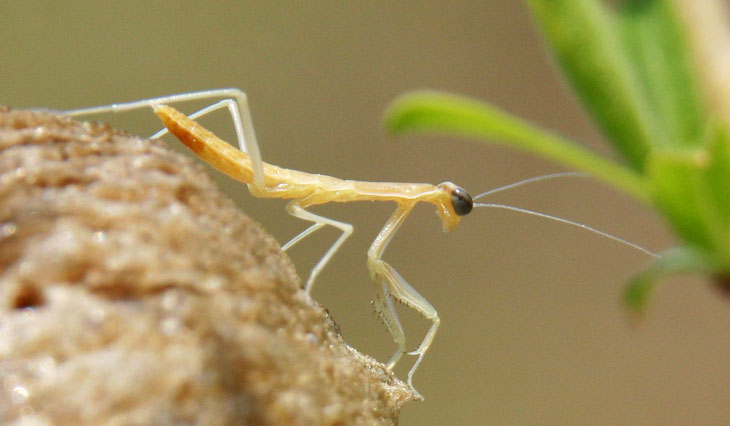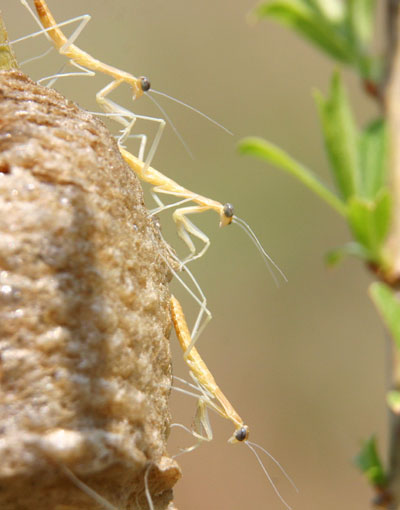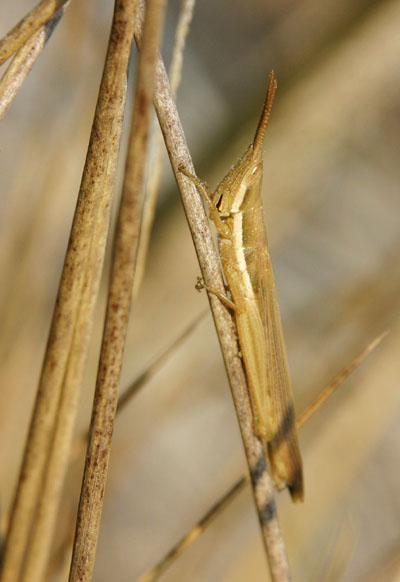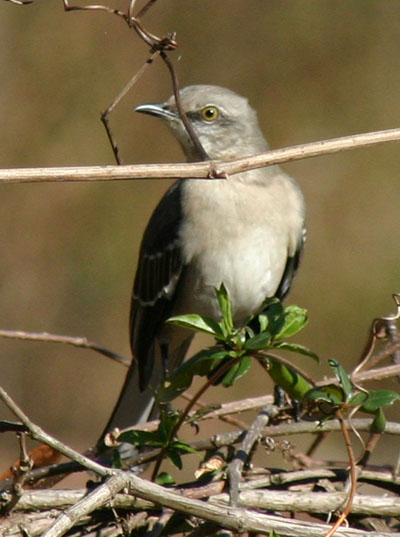Some time back I talked about the power of tradition, and why it even has this power. Now, as I approach a topic that’s been stewing in my head for a while, I recognize that this same power is one of the things that seems to be working directly against our understanding and use of a simple subject, so much so that scientific and philosophical debate are actually taking place.
That subject is free will. We all know what that is, right? Just like we know what consciousness is – until we’re asked to define it in a functional way. Then things start to get a bit fuzzy. So pause here, give it a shot now, and define “free will” in a way that you’re satisfied with, then forge on. Let’s see if we’re on the same page.
Merriam Webster says:
1: voluntary choice or decision <I do this of my own free will>;
2: freedom of humans to make choices that are not determined by prior causes or by divine intervention
…while Wikipedia says:
Free will is the putative ability of agents to make choices free from certain kinds of constraints. Historically, the constraint of dominant concern has been the metaphysical constraint of determinism.
… and goes on from there, as Wiki does (did you ever see a short Wiki article?) Both hint at the historical source, which is basically scriptural; free will is what separates us from “the animals,” and is defined as the ability to purposefully choose between good and evil, or even know what those are. Chances are, your own definition included at least portions of these, and perhaps favored one in particular over the others. I put “the animals” in quotes, by the way, because it’s another concept that we still fall prey to, and it’s simplistic in nature: we are animals ourselves, by any definition of the word. Anyone doubting this just needs to watch me eat…
So, the original idea was really, “capable of sin,” the aspect that distinguished us from other species, the ones without souls. In working parlance now, it still distinguishes us, but in much vaguer ways. It amounts to capriciousness, the concept that we can do whatever we want, and engage in behavior on a whim, as opposed to merely responding to instinct and/or conditioning. It also implies, explicitly, that what we do is not governed by specific physical constraints such as a predetermined destiny or predictable chemical interactions. The other side of this, the idea that physical (or metaphysical) laws can account for everything we do, is referred to as determinism.
If you read that Wiki article, you can see that this is a deeply philosophized idea, with much debate over whether our minds are really as open to variation as we’d like to believe, or whether, given our particular individual backgrounds, our brains must arrive at specific conclusions or actions because that’s simply how they work – predictable electrochemical reactions. In other words, if I know enough about any particular brain, I could predict what someone’s reaction to specific questions would be, every time, because their reaction is guided by their past experiences and is not, for instance, random. Even if they consciously decide to be random, crazy, impetuous, this is only an aspect of their brain that called for departing from a first choice at that particular time, maybe simply to try and thwart my prediction and demonstrate their own free will.
All this is particularly pointless, however. Why we actually concern ourselves over free will doesn’t have anything to do with blindly following instinct, or with whether our past experience guides us irrevocably. The clue to this is when you think of phrases such as “against our will” – obviously, we have very limited functions within us that are truly involuntary, such as responding to pain or something getting in our eye. With a bit of effort, we can often overcome these, and exert our free will even over our own bodies.
No, the point really is whether or not we’re happy with our decisions, whether or not the behavior we engage in is, not voluntary, that’s not even necessary, but simply acceptable to us. That’s what we really want to have, isn’t it? Our past experience may tell us that a certain intersection is prone to idiots jumping the light, and this conditions us to be cautious when approaching it again. We don’t concern ourselves with whether this is an automatic function of our brains, nor with whether or not we can consciously overcome this if we wanted – instead, it’s obviously to our benefit to be wary. Or we may see a new restaurant, and impetuously decide to try it out – perhaps governed entirely by our hunger, desire for a better eating experience, time constraints, knowledge of that type of food, and so on. The impetuousness that we thought we had relies on a large number of factors, all of which may be dictated very specifically by the composition of our synapses – there was only one decision we were possibly going to make at that period in time, so we made it. This only bothers us if we feel that we don’t have control, because that lack of control may lead us someplace we don’t want to go. But the very nature of this determinism is that we approve of our decisions – it’s not involuntary, or at least not perceived as such.
This is where it becomes downright silly. We’ve got this concept, traditionally, in our culture now, and have a certain investment in it – “free will” is our ability to do as we please, not beholden to involuntary actions or reactions. It’s simply nonsense, a holdover from a time when we didn’t understand how our minds and bodies work, rooted in the fear of being unhappy – as well as being a feeble attempt to explain why a designed world seemed so random and callous to us, the Chosen Folk™. We had to have free will so we could choose, or not, to follow the deity’s rules. Why this was even necessary, why any such deity would base mankind’s entire mortal existence on whether or not we had the opportunity to be bad, still hasn’t been answered, and I suspect will continue that way as long as religion is viewed as useful. If you want to ponder it, you can also take a stab at whether one choice being punished with eternal torment constitutes anything remotely resembling “free.” When practiced across numerous cultures throughout history, it was considered “slavery,” but then again, no one could manage perpetual punishment, so maybe that’s the crucial difference?
All that has nothing to do with the plain fact that we function on past experience, for exceptionally good reasons, and act based on that experience. Would you have it any other way? We may jerk our hands away from a hot surface, or dodge a flying object. Does that bother us? Free will might be said to be the ability to plunge a sharp nail through our arm; survival and pain instincts, plus past experience, prevents us from doing it – do we have a problem with such self-preservation? We would have a much greater problem with having no such instincts, as well as engaging in truly random actions, even occasionally. Swerving in our traffic lane, for instance, or eating something unknown, just because we can. “Ha ha, look! I’m exercising free will!” Yes, perhaps very briefly.
It seems highly likely, given what we know about the makeup of our bodies and chemical reactions and so on, that our decisions really are deterministic. Given enough knowledge of brain synapses, for example, may mean we could predict the thoughts and actions of any individual. But so what? The amount of information that this would require, including the factors of the constant sensory input of experience, of merely living, is so far beyond our ability to capture, much less comprehend in real time, that such theoretical pursuits will likely remain forever theoretical. We could concern ourselves with the idea that it all has an inevitable conclusion, but so does every movie we watch, already committed as it is to celluloid (polycarbonate, silicon, whatever.) The places we plan to visit have a fixed set of properties, too: buildings here, oceans there, all distinctly determined – they don’t jump about at random. The appearance of a heron when I’m out pursuing photos might be deterministic as well, but I don’t know that. What we seek is the experience, the building of knowledge within that very organ that guides our actions, the brain. And these experiences provide different, and much greater, factors to build our actions upon – everything we learn colors our actions from that point on. That’s what interests and excites us, and always has (regardless of how you felt then or now about free will.) That’s all that’s really important.

 The bright conditions today helped no small amount, because I packed light and didn’t bring a tripod, never a good idea when doing macro work. But I was able to shoot handheld at f11, ISO 400, and get excellently sharp images. Once again, depth-of-field gets very short for closeup and macro work, so closing down the aperture to f11 or f16 is almost a necessity, and my friends here (well, they didn’t think so) obliged by lining up in a way that I could get them all in the same focal plane. Even a short variation in distance from the camera, forward or back, would be enough to bring one or another out of sharp focus – notice the cocoon and background leaves. So the goal in macro work is to get the key portions of your subject the same distance from the camera. Technically, this is the same distance from the focal plane, which is the film or sensor – I point this out because tilt-lenses and view cameras can allow some creative options in this regard. Tilting the focal plane can do some neat things to depth-of-field. I have a full-movement 4×5 monorail camera – the old bellows-style, put-your-head-under-the-black-cloth monster, that I just haven’t been masochistic enough to try closeup work with, but it could be very entertaining. Because of the elaborate setup needed for view cameras, focusing and metering and loading the film holders, they’re not for anxious or quick-moving subjects like mantises. Fossils are good macro subjects for view cameras, if you find a placid one.
The bright conditions today helped no small amount, because I packed light and didn’t bring a tripod, never a good idea when doing macro work. But I was able to shoot handheld at f11, ISO 400, and get excellently sharp images. Once again, depth-of-field gets very short for closeup and macro work, so closing down the aperture to f11 or f16 is almost a necessity, and my friends here (well, they didn’t think so) obliged by lining up in a way that I could get them all in the same focal plane. Even a short variation in distance from the camera, forward or back, would be enough to bring one or another out of sharp focus – notice the cocoon and background leaves. So the goal in macro work is to get the key portions of your subject the same distance from the camera. Technically, this is the same distance from the focal plane, which is the film or sensor – I point this out because tilt-lenses and view cameras can allow some creative options in this regard. Tilting the focal plane can do some neat things to depth-of-field. I have a full-movement 4×5 monorail camera – the old bellows-style, put-your-head-under-the-black-cloth monster, that I just haven’t been masochistic enough to try closeup work with, but it could be very entertaining. Because of the elaborate setup needed for view cameras, focusing and metering and loading the film holders, they’re not for anxious or quick-moving subjects like mantises. Fossils are good macro subjects for view cameras, if you find a placid one.  While walking alongside the fields and tall grasses, there were constant ratcheting zipper sounds – grasshoppers taking short flights with noisy wings. I’m not really sure what purpose this serves, since it attracts attention directly to them, making them easy prey for birds I would think. But perhaps it’s a sexual signal, and its usefulness in reproduction outstrips its hazard? The little guy here, however, is not one of them. Its flight was quite silent, and if I hadn’t been paying close attention to where it landed, its camouflage would have served remarkably well. This is a Cattail Toothpick Grasshopper (Leptysma marginicollis marginicollis,) and as implied by the name, I found it alongside the catch basin. It was perfectly trusting in its ability to blend in, so I was able to approach quite close without causing the anxiety that the mantises displayed. At maybe three centimeters long, only a close inspection would show that this was something other than a leaf.
While walking alongside the fields and tall grasses, there were constant ratcheting zipper sounds – grasshoppers taking short flights with noisy wings. I’m not really sure what purpose this serves, since it attracts attention directly to them, making them easy prey for birds I would think. But perhaps it’s a sexual signal, and its usefulness in reproduction outstrips its hazard? The little guy here, however, is not one of them. Its flight was quite silent, and if I hadn’t been paying close attention to where it landed, its camouflage would have served remarkably well. This is a Cattail Toothpick Grasshopper (Leptysma marginicollis marginicollis,) and as implied by the name, I found it alongside the catch basin. It was perfectly trusting in its ability to blend in, so I was able to approach quite close without causing the anxiety that the mantises displayed. At maybe three centimeters long, only a close inspection would show that this was something other than a leaf.



















































 Another good habit is to check your settings routinely. Most especially when you turn the camera on, but also periodically when shooting. It’s very easy to change a setting accidentally, or on purpose and forget that you’ve done so. The time to find out is not after you’ve uploaded a busy photo session to your computer. Check mode switch, ISO, exposure settings, color settings, contrast settings – whatever you actually mess with. And one I was reminded of today: the diopter correction on the viewfinder, if you have one. This is often a little dial or slide switch right alongside the viewfinder window, which changes the focus distance in the viewfinder for your eyesight. Manual focus is really hard when the viewfinder isn’t showing you the clearest image.
Another good habit is to check your settings routinely. Most especially when you turn the camera on, but also periodically when shooting. It’s very easy to change a setting accidentally, or on purpose and forget that you’ve done so. The time to find out is not after you’ve uploaded a busy photo session to your computer. Check mode switch, ISO, exposure settings, color settings, contrast settings – whatever you actually mess with. And one I was reminded of today: the diopter correction on the viewfinder, if you have one. This is often a little dial or slide switch right alongside the viewfinder window, which changes the focus distance in the viewfinder for your eyesight. Manual focus is really hard when the viewfinder isn’t showing you the clearest image.